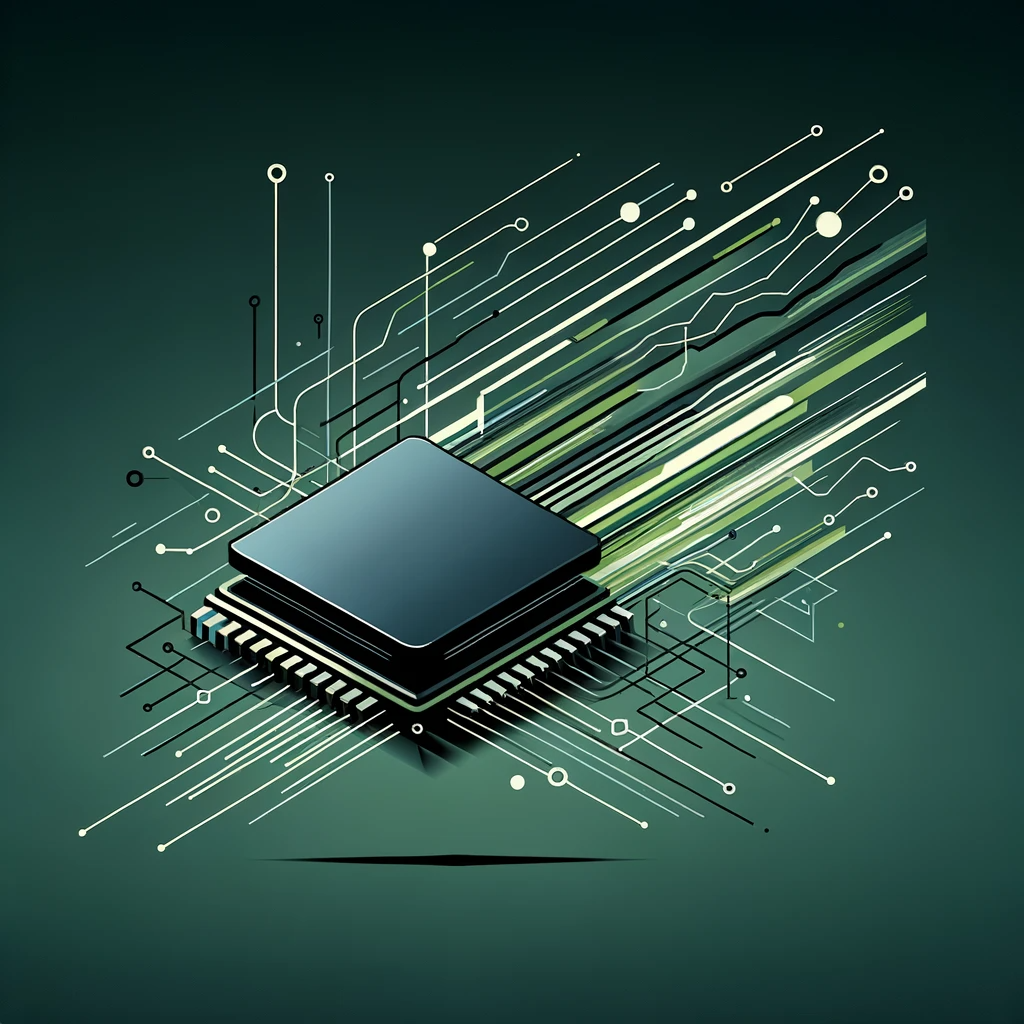
In its CES 2024 blog, NVIDIA characterized its announcements as “A Launching Pad for Generative AI” – a fitting description considering 2023 was certainly the year that Gen AI became mainstream. This statement alone encapsulates the monumental shift in the technological landscape, particularly in the realm of artificial intelligence, which has seen a remarkable evolution in recent years.
NVIDIA, a giant in the realm of chip technology, plays a crucial role in advancing AI, much like Intel’s critical role in the PC era. At CES 2024, NVIDIA’s announcements covered a range of sectors, including consumer computing, gaming, the automotive industry, and robotics. These advancements, while primarily consumer-focused, serve as harbingers for upcoming trends in business technology.
NVIDIA: AI Computing for Gamers and Content Creators
One of the most notable announcements was the introduction of AI-enhanced laptops, spearheaded by NVIDIA’s launch of the GeForce RTX 40 SUPER Series GPUs, AI-ready laptops, and generative AI tools, all aimed at gamers and creators.
GeForce RTX, with an installed base of 100 million GPUs and 500 RTX games and apps, stands as the world’s largest platform for gamers, creators, and generative AI. These GPUs are vital for Gen AI, powering popular services like ChatGPT and Stable Diffusion.
Justin Walker, NVIDIA’s Senior Director of Product Management, highlighted the rapid growth of RTX as NVIDIA’s fastest-growing laptop platform. “It’s grown 5X in the last four years, and there’s now more than 50 million RTX laptops around the world,” he stated. “At CES, we’re announcing a new wave of RTX laptops, launching from every major OEM.”
The new RTX laptops, ranging from compact 14-inch models to larger 18-inch ones, are all equipped with Tensor Cores, rendering them AI-ready. Additionally, NVIDIA announced three new desktop GPUs based on the Ada Lovelace architecture, promising enhanced performance for gamers and significant AI processing power for generative AI applications.
Accelerating Large Language Models
Jeff Fisher, Senior VP for GeForce at NVIDIA, discussed the advancements in large language models, particularly with the October 2023 release of the TensorRT-LLM library for Windows. This development has significantly accelerated large language models like Llama 2 and Mistral on RTX PCs.
The introduction of “Chat with RTX” marks a significant step forward, allowing users to access an RTX-accelerated LLM using their own data, ranging from locally stored documents to YouTube videos. This technology uses retrieval-augmented generation (RAG) to enhance the accuracy and reliability of GenAI models.
Furthermore, NVIDIA has turbocharged Stable Diffusion XL and SDXL Turbo using the Automatic1111 text-to-image app with TensorRT acceleration, claiming a performance boost of up to 60%.
Twitch Livestreaming and Robotics Simulation
In collaboration with Twitch, NVIDIA is set to revolutionize livestreaming by enabling streamers to send up to three concurrent streams at different resolutions and quality levels, ensuring an optimal viewing experience.
NVIDIA’s partnership with Activision/Blizzard has seen the integration of RTX technology in over 500 games and apps, including titles like Alan Wake 2 and Diablo IV. This partnership extends into cloud gaming with GeForce NOW.
In the realm of robotics, NVIDIA Isaac significantly accelerates the deployment of robots in real-world settings. By training robots in simulated environments, NVIDIA Isaac enables rapid development and deployment across various industries, including manufacturing, warehousing, and healthcare.
My Key Takeaways
NVIDIA’s CES 2024 announcements were comprehensive and indicative of the company’s continued dominance in AI. NVIDIA’s strength lies not just in its GPU technology but in its ability to create integrated systems encompassing GPUs, software, and a broad ecosystem of hardware. The highlight of these announcements
was undoubtedly the AI laptops, representing a significant leap in bringing generative AI capabilities to desktops, complementing what has already been achieved in cloud computing.
These advancements showcase NVIDIA’s unwavering commitment to pushing the boundaries of AI and computing. The introduction of AI-ready laptops and desktops is a game-changer for both gamers and professional content creators. These devices offer unprecedented processing power, enabling users to run complex AI models and applications effortlessly. This is especially crucial in today’s digital landscape, where the demand for high-quality, real-time content creation and gaming experiences is ever-increasing.
Moreover, the advancements in large language model acceleration mark a significant step in making AI more accessible and efficient. The TensorRT-LLM library and the new “Chat with RTX” feature demonstrate NVIDIA’s dedication to enhancing the performance and usability of AI models. This not only benefits the end-users but also opens up new possibilities for developers and researchers working on AI and machine learning projects.
NVIDIA’s collaboration with Twitch and Activision/Blizzard further illustrates the company’s influence in the gaming industry. The multi-encode livestreaming capability is a testament to NVIDIA’s innovation in providing solutions that cater to the evolving needs of gamers and streamers. This technology not only enhances the streaming experience for viewers but also offers streamers more flexibility and control over their content.
The advancements in robotics simulation with NVIDIA Isaac are equally noteworthy. By enabling robots to be trained in simulated environments, NVIDIA is reducing the time and resources required for real-world training. This is particularly beneficial in industries where precision and efficiency are paramount. The application of NVIDIA Isaac in various sectors, from manufacturing to healthcare, underscores the potential of AI and robotics in transforming industry operations and improving productivity.
In conclusion, NVIDIA’s announcements at CES 2024 are a clear indication of the company’s pivotal role in the AI revolution. The launch of AI-ready laptops and desktops, advancements in large language model acceleration, collaborations in gaming and streaming, and innovations in robotics simulation collectively highlight NVIDIA’s vision and expertise in shaping the future of AI and technology. As NVIDIA continues to innovate and lead in this domain, it is evident that the company is not just a part of the AI revolution but is actively driving it forward, setting new standards and expectations for what is possible in the world of artificial intelligence and computing.
